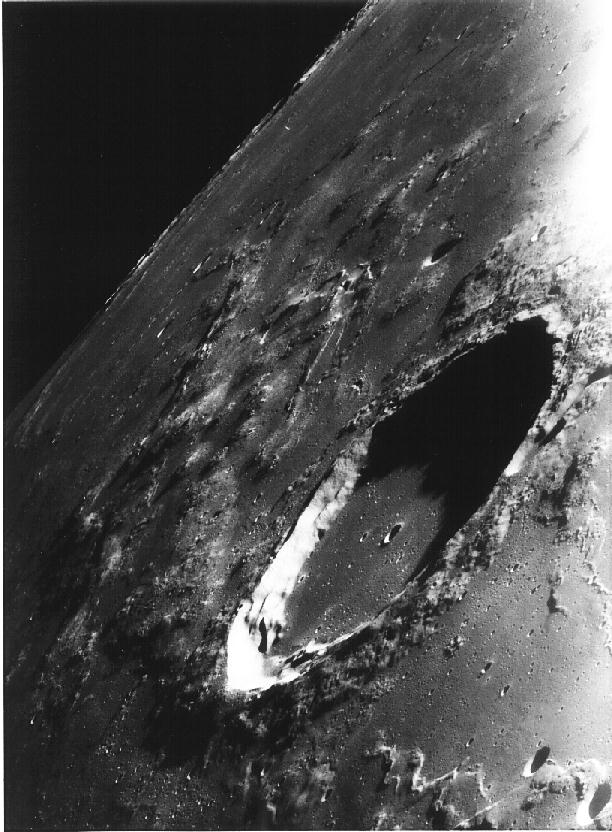Hello all -
This blog will no longer be updated. Please visit my new site at:
www.johnwardknox.com
Saturday, October 24, 2009
Wednesday, August 19, 2009
toward a still life







Nothing ever turns out just how you want it. When I was carving this piece into the wall I faced many problems. During one of these periods I was sanding furiously, trying to overcome a particularly stubborn fact. A fine dust filled the gallery, and it was very beautiful to turn around and watch the slow waltz of particles in the light. I was reminded that in chemistry, a solution is when a gas, liquid, or solid is dispersed homogeneously in a gas, liquid, or solid. I felt grateful for the creation I was unwittingly making, but I was also aware that the dust would eventually settle, that this was only a temporary solution.
It was a real relief to clear away what wasn’t needed, to figure out that sometimes the solution is just rearranging the problem. In this case, working toward a still life meant turning my back on the thing that was most pressing for me at the time. Sometimes you just need to focus on something different.
Tuesday, May 26, 2009
Events that happened at Enjoy while 'gains on loses' was exhibited

John Ward Knox artist talk.


Greg Malcolm's musical set and Peter Trevelyan's light installation. As a part of the White Fungus Relocation Party
images by Kimberley Lorne-McDougall Gustavsson


Hue & Cry Issue Three launch party, Readings by: Airini Beautrais, Bill Nelson, John Summers
Including performance by Raised by Wolves.
images by John Lake

Native American contemporary artist James Luna public talk.
gains on losses reviewed by Thomasin Sleigh in The Lumière Reader
http://lumiere.net.nz/reader/arts.php/item/2108
Monday, April 27, 2009
Tuesday, February 17, 2009
Monday, February 16, 2009
Tuesday, January 20, 2009
Essay for Selina Foote's show 'Fire Riot Meat' at Newcall
An early attempt.
When I was a child I tried once to capture the image of a flower. Casting across the yard I sought the most vivid punctuation, a small mark of glory. In the shadows attested itself just such a colourful defiance, soon snatched up.
Emulating actions observed somewhere previously I prepared a heavy tome and two leaves of paper, placed the flower between the leaves and closed the case. Having never seen the results of this process I had presumed that the object of the undertaking was to translate directly the image of the flower from the actual article to the paper. I had thought that the flower would reproduce itself in death, leaving its legacy in perfect reproduction.
I was dismayed then, upon opening the book several weeks later to find a flattened ochre flower and a pale pastiche of colours soaked into the white sheets. Where a petal had lain red, it’s remnant an almost-green brown. Its ghosted fragrance released and risen the second surprise, a thin but accurate trace of the flower in life. While the flower had held onto its hue unto death, it seemed I had caught its bouquet.
The scent of the flower is the thing it willingly projects, the part of itself that is cast out in a carefree dance of emancipation, particles suspended in the air to entice sentience to company. Pause the world at any given moment and witness a billion lines of smoky enquiry.
In my attempt to take the image of the flower, I had instead received only that which the flower had already decided to relinquish. It was an early challenge to my presumed right to take an image from the world. What I had thought of as a concise vivid object to be chosen and framed revealed itself as a complicated and open realm of revelation and obscurity.
2009
When I was a child I tried once to capture the image of a flower. Casting across the yard I sought the most vivid punctuation, a small mark of glory. In the shadows attested itself just such a colourful defiance, soon snatched up.
Emulating actions observed somewhere previously I prepared a heavy tome and two leaves of paper, placed the flower between the leaves and closed the case. Having never seen the results of this process I had presumed that the object of the undertaking was to translate directly the image of the flower from the actual article to the paper. I had thought that the flower would reproduce itself in death, leaving its legacy in perfect reproduction.
I was dismayed then, upon opening the book several weeks later to find a flattened ochre flower and a pale pastiche of colours soaked into the white sheets. Where a petal had lain red, it’s remnant an almost-green brown. Its ghosted fragrance released and risen the second surprise, a thin but accurate trace of the flower in life. While the flower had held onto its hue unto death, it seemed I had caught its bouquet.
The scent of the flower is the thing it willingly projects, the part of itself that is cast out in a carefree dance of emancipation, particles suspended in the air to entice sentience to company. Pause the world at any given moment and witness a billion lines of smoky enquiry.
In my attempt to take the image of the flower, I had instead received only that which the flower had already decided to relinquish. It was an early challenge to my presumed right to take an image from the world. What I had thought of as a concise vivid object to be chosen and framed revealed itself as a complicated and open realm of revelation and obscurity.
2009
Subscribe to:
Comments (Atom)


















